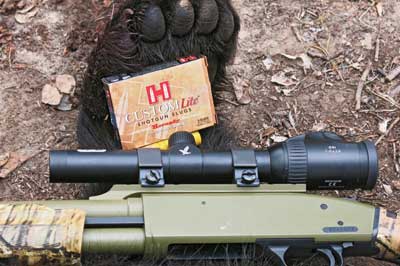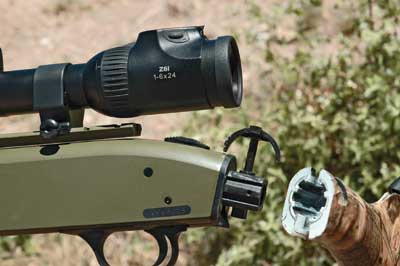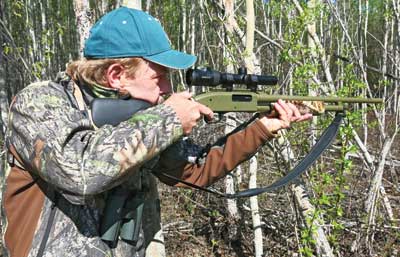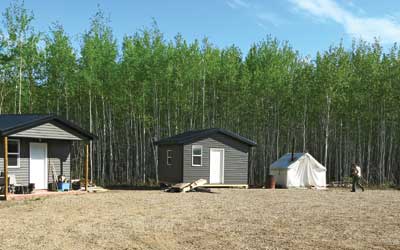When I first started hunting deer and bear in slug-only zones, the premier tool of the day was Ithaca’s rifle-sighted, smoothbore Model 37 Deerslayer. The slugs available then were either Foster-type rifled slugs or the German Brenneke slugs (designed around 1898). The only debate among them was whether the 12 or the 20 gauge was the better gun.
The 12-gauge adherents pointed to the smack-down qualities of their big slugs, while the 20-gauge advocates firmly believed their smaller slugs delivered more penetration at longer ranges. Regardless, those early Ithaca Deerslayers shooting those old-school slugs slew a pile of big game.
Fast forward to 2014. Mossberg applies of their versatile FLEX system to the Model 500 20-gauge line, and Hornady’s release of a 2-3/4-inch, 20-gauge reduced-recoil “Custom Lite” sabot load, featuring a 250-grain SST at 1,600 fps.
So I decided to combine these two developments and came up with a plan to morph my FLEX 500 20-gauge—which had been set up for turkey hunting—into a dedicated slug gun and go hunting.
In the month of May, the black bear season was in full swing in Canada. So arrangements were made with Wally Mack of W&L Guide Services in High Level, Alberta. W&L has developed an enviable reputation in the outfitting world based on the quality of their camp facilities, cuisine, professional guides and their consistently high-quality black bears. For about $3,450—plus a modest two-bear license fee—you can enjoy a week of bear hunting you’ll never forget.
Before I left for Alberta, I needed two accessories to change my Model 500 from a turkey platform into an effective big-game slug gun—a fully rifled barrel with an integral, cantilevered scope base and a dual-comb, 4-position adjustable hunting stock. Once I had these, making the switch-over from turkey gun to slug gun literally took only a couple of minutes.
If you’ve never worked with the Mossberg FLEX system—now applied across-the-board to their shotgun, centerfire and rimfire lines—it’s remarkably simple, rugged and versatile. The heart of the system is a tool-less, locking-spline-coupling to connect any of the FLEX buttstocks to any of the FLEX receivers. Essentially, there is a zinc multi-splined stub at the rear of the receiver which mates with a female socket in the wrist of the stock. Locking them together is a vertical, swiveling key attached to the receiver stub, which is recessed into the upper section of the wrist.
To change out buttstocks, all you do is lift up the recessed locking key, turn it 90 degrees counterclockwise, remove the existing stock, insert the new one, turn the key clockwise and seat it down into the wrist of the stock.
Because I was going to shoot slugs (even “lite” ones), I pushed a button release at the bottom of the stock, popped off the existing recoil pad and snapped on a 1-inch pad. Then, because I would be putting optics on the gun, I mounted the high comb pad, which came with the 4-position stock, by merely sliding it in place and locking it down with a recessed Allen screw.
If I had wanted to change out the forearm for some reason, all I would have had to do was to push a button release at the base of the forearm and swing the forearm out and off.
Now the only missing part of my ensemble was optics.









